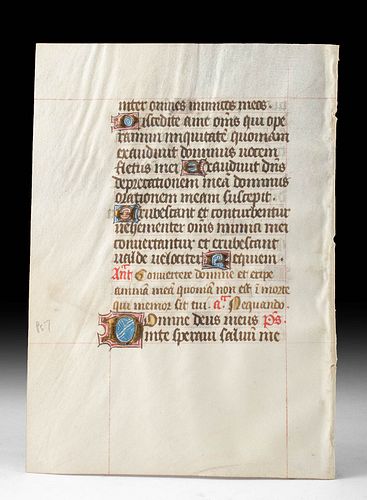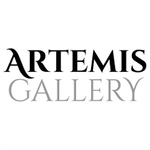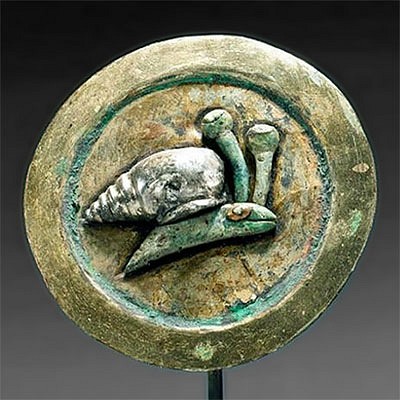15th C. Illuminated Vellum Page - Book of Hours
Lot 133a
About Seller
Artemis Fine Arts
686 S Taylor Ave, Ste 106
Louisville, CO 80027
United States
Selling antiquities, ancient and ethnographic art online since 1993, Artemis Gallery specializes in Classical Antiquities (Egyptian, Greek, Roman, Near Eastern), Asian, Pre-Columbian, African / Tribal / Oceanographic art. Our extensive inventory includes pottery, stone, metal, wood, glass and textil...Read more
Categories
Estimate:
$600 - $900
Absentee vs Live bid
Two ways to bid:
- Leave a max absentee bid and the platform will bid on your behalf up to your maximum bid during the live auction.
- Bid live during the auction and your bids will be submitted real-time to the auctioneer.
Bid Increments
| Price | Bid Increment |
|---|---|
| $0 | $25 |
| $300 | $50 |
| $1,000 | $100 |
| $2,000 | $250 |
| $5,000 | $500 |
| $10,000 | $1,000 |
| $20,000 | $2,500 |
| $50,000 | $5,000 |
| $100,000 | $10,000 |
| $200,000 | $20,000 |
About Auction
By Artemis Fine Arts
Oct 22, 2020
Set Reminder
2020-10-22 10:00:00
2020-10-22 10:00:00
America/New_York
Bidsquare
Bidsquare : Ancient & Ethnographic Art Through The Ages
https://www.bidsquare.com/auctions/artemis-gallery/ancient-ethnographic-art-through-the-ages-5850
Ancient art from Egypt, Greece, Italy and the Near East, as well as Asian, Fossils, Pre-Columbian, Native American, African / Tribal / Oceanic, Fine art, and much more! All categories, all price ranges... all legally acquired and guaranteed to be as described or your money back. Artemis Fine Arts info@artemisgallery.com
Ancient art from Egypt, Greece, Italy and the Near East, as well as Asian, Fossils, Pre-Columbian, Native American, African / Tribal / Oceanic, Fine art, and much more! All categories, all price ranges... all legally acquired and guaranteed to be as described or your money back. Artemis Fine Arts info@artemisgallery.com
- Lot Description
Europe, ca. 15th to 16th century. A lovely illuminated vellum page from the "Book of Hours" inscribed with sixteen lines of Latin letter-batarde script on each side in black, red, and gold ink. The first letter of each sentence is beautifully embellished with gold and surrounded by a black square containing a crimson, cobalt, and white design. Note that the gold lettering indicates this is a psalm, hymn, or antiphon, while the enlarged letter "D" that follows denotes the beginning of a new prayer. Originally part of a larger corpus, this page serves as a breathtaking work of art of its own merit with a finely balanced layout, enriching use of color, masterful decoration, and painstakingly delineated calligraphic script. Size: 4.375" W x 6.125" H (11.1 cm x 15.6 cm)
The Book of Hours developed in the late medieval era and was essentially a prayer book created for individual patrons and illuminated with beautifully painted details and scenes depicting the life of Christ, the Virgin Mary, and various saints. The text of a Book of Hours usually included a calendar that delineated all the liturgical feast days as well as a series of prayers intended to be recited eight times per day. By the time of the early Renaissance, the Book of Hours was quite popular due to the increase in text circulation and literacy with Johannes Gutenberg's invention of the printing press in the mid-fifteenth century and indicating that the laity were growing more interested in communing directly with God and the saints rather than relying on the church and clergy to communicate with a higher power. These beliefs are what laid the ground work for a certain seminal text that would be nailed to the church door of Wittenberg's main cathedral on October 31, 1517; Martin Luther's "95 Theses".
The word "manuscript" literally means "written by hand" and comes from the Latin words manus (hand) and scriptus (writing). These books were the creations of several skilled individuals who devoted many hours to their respective tasks. First, the vellum or parchment was created by one person. Then the text was handwritten by a scribe who meticulously wrote every word in ink with a quill pen. Finally, an illuminator (from the Latin illuminaire meaning "lighted up") decorated these books with gold leaf and brilliant color. Such books were made by urban booksellers called libraire during this the Middle Ages and the Renaissance, and were created in literary centers such as Paris, Bruges, Ghent, or Valenciennes. The production of illuminated manuscripts continued in earnest until the mass production of books was made possible by Johannes Gutenberg's invention of moveable type and the printing press. Books like these were prized objects, often given as gifts to commemorate important occasions.
Provenance: ex Estate of Eldert Bontekoe, Pegasi Numismatics, Ann Arbor, Michigan USA acquired before 2000
All items legal to buy/sell under U.S. Statute covering cultural patrimony Code 2600, CHAPTER 14, and are guaranteed to be as described or your money back.
A Certificate of Authenticity will accompany all winning bids.
We ship worldwide and handle all shipping in-house for your convenience.
#158254Marked in pencil with "91" on the corner of one side and "Ps7" in the left margin of the other. Expected wrinkling with very light stains commensurate with age. Side of page has minute tears. Otherwise, intact and excellent.Condition
- Shipping Info
-
All shipping is handled in-house for your convenience. Your invoice from Artemis Gallery will include shipping calculation instructions. If in doubt, please inquire BEFORE bidding for estimated shipping costs for individual items.
-
- Buyer's Premium



 EUR
EUR CAD
CAD AUD
AUD GBP
GBP MXN
MXN HKD
HKD CNY
CNY MYR
MYR SEK
SEK SGD
SGD CHF
CHF THB
THB














